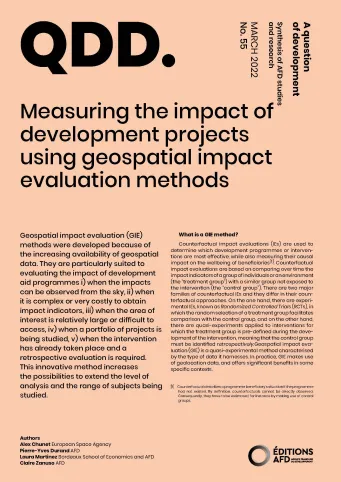Share the page
Measuring the impact of development projects using geospatial impact evaluation methods
Published on

Geospatial impact evaluation (GIE) methods were developed because of the increasing availability of geospatial data. They are particularly suited to evaluating the impact of development aid programmes i) when the impacts can be observed from the sky, ii) when it is complex or very costly to obtain impact indicators, iii) when the area of interest is relatively large or difficult to access, iv) when a portfolio of projects is being studied, v) when the intervention has already taken place and a retrospective evaluation is required. This innovative method increases the possibilities to extend the level of analysis and the range of subjects being studied.
Useful Information
-
Authors
-
Alex Chunet , Pierre-Yves Durand, Laura Martinez., Claire ZANUSO
-
Edition
-
55
-
Number of pages
-
4
-
ISSN
-
2271-7404
-
Collection
-
A Question of Development
-
Other languages
